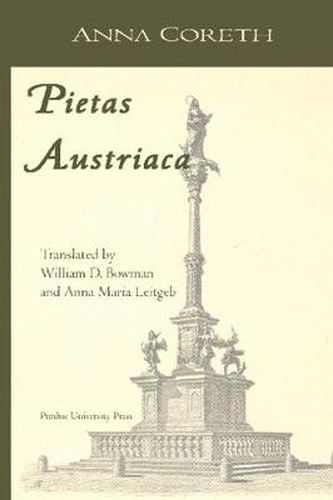Readings Newsletter
Become a Readings Member to make your shopping experience even easier.
Sign in or sign up for free!
You’re not far away from qualifying for FREE standard shipping within Australia
You’ve qualified for FREE standard shipping within Australia
The cart is loading…






Pietas Austriaca studies the relationship between religious beliefs and practices and Habsburg political culture from the end of the medieval period to the early 20th century. In this seminal work, Anna Coreth examines the ways that Catholic beliefs in the power of the Eucharist, the cross, the Virgin Mary and saints were crucial for the Habsburg ruling dynasties in Austria and Spain. Coreth analyses how leading Habsburg rulers in the early modern period used Catholic sacraments, rituals and symbols to create a sense of identity and political purpose for their far-flung possessions in Europe. She also demonstrates how this Catholic culture drew on earlier models of pious Catholic rulers, especially on the memory of Rudolph. In addition, the book discusses the importance of this particular brand of Catholic piety in the confrontation with Protestantism in the Counter-reformation period and in the encounter with the Muslim Turkish Empire. Coreth extends her study to discuss the myriad of ways that this religious culture continued to influence Austrian society in the 19th and 20th centuries.
$9.00 standard shipping within Australia
FREE standard shipping within Australia for orders over $100.00
Express & International shipping calculated at checkout
Pietas Austriaca studies the relationship between religious beliefs and practices and Habsburg political culture from the end of the medieval period to the early 20th century. In this seminal work, Anna Coreth examines the ways that Catholic beliefs in the power of the Eucharist, the cross, the Virgin Mary and saints were crucial for the Habsburg ruling dynasties in Austria and Spain. Coreth analyses how leading Habsburg rulers in the early modern period used Catholic sacraments, rituals and symbols to create a sense of identity and political purpose for their far-flung possessions in Europe. She also demonstrates how this Catholic culture drew on earlier models of pious Catholic rulers, especially on the memory of Rudolph. In addition, the book discusses the importance of this particular brand of Catholic piety in the confrontation with Protestantism in the Counter-reformation period and in the encounter with the Muslim Turkish Empire. Coreth extends her study to discuss the myriad of ways that this religious culture continued to influence Austrian society in the 19th and 20th centuries.